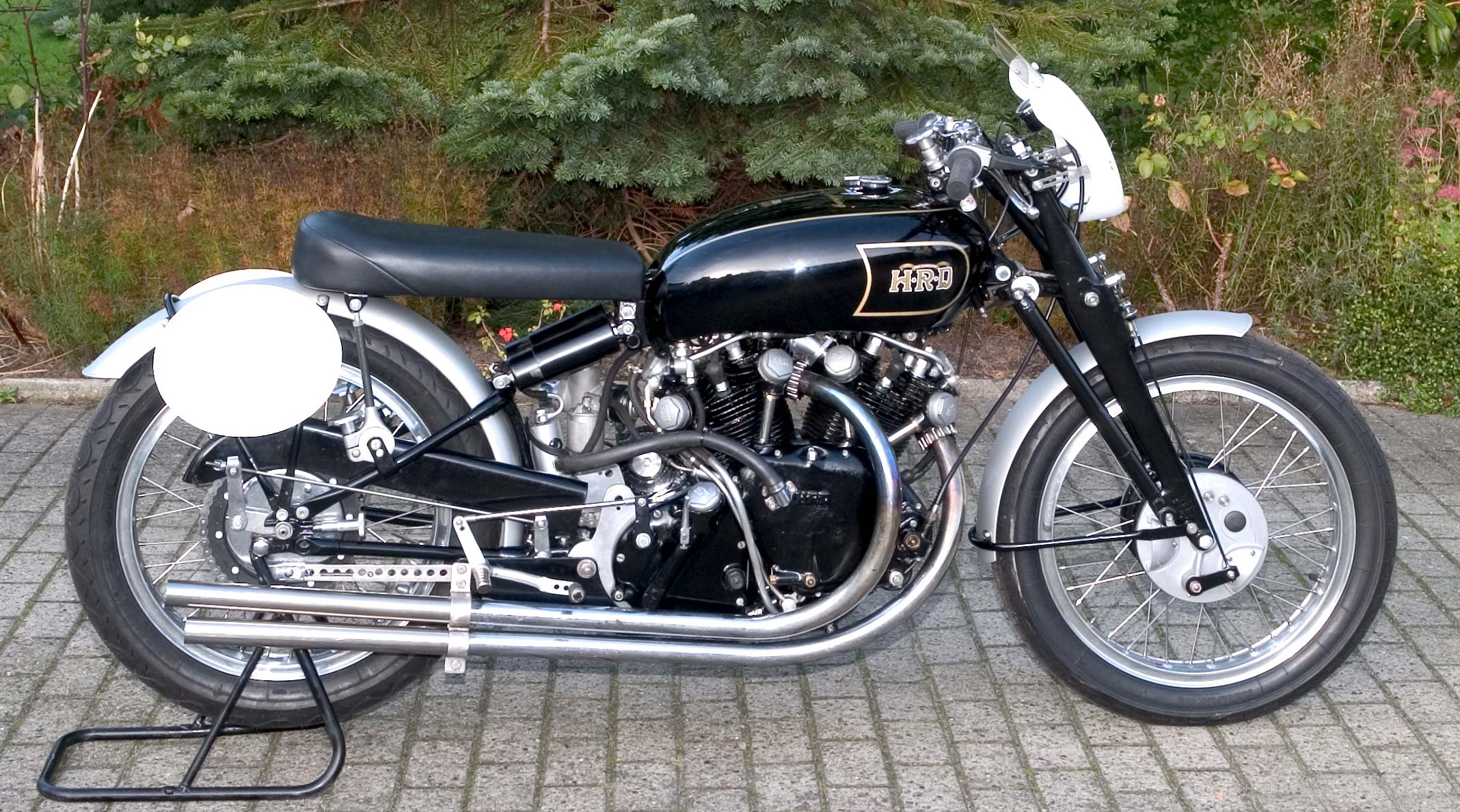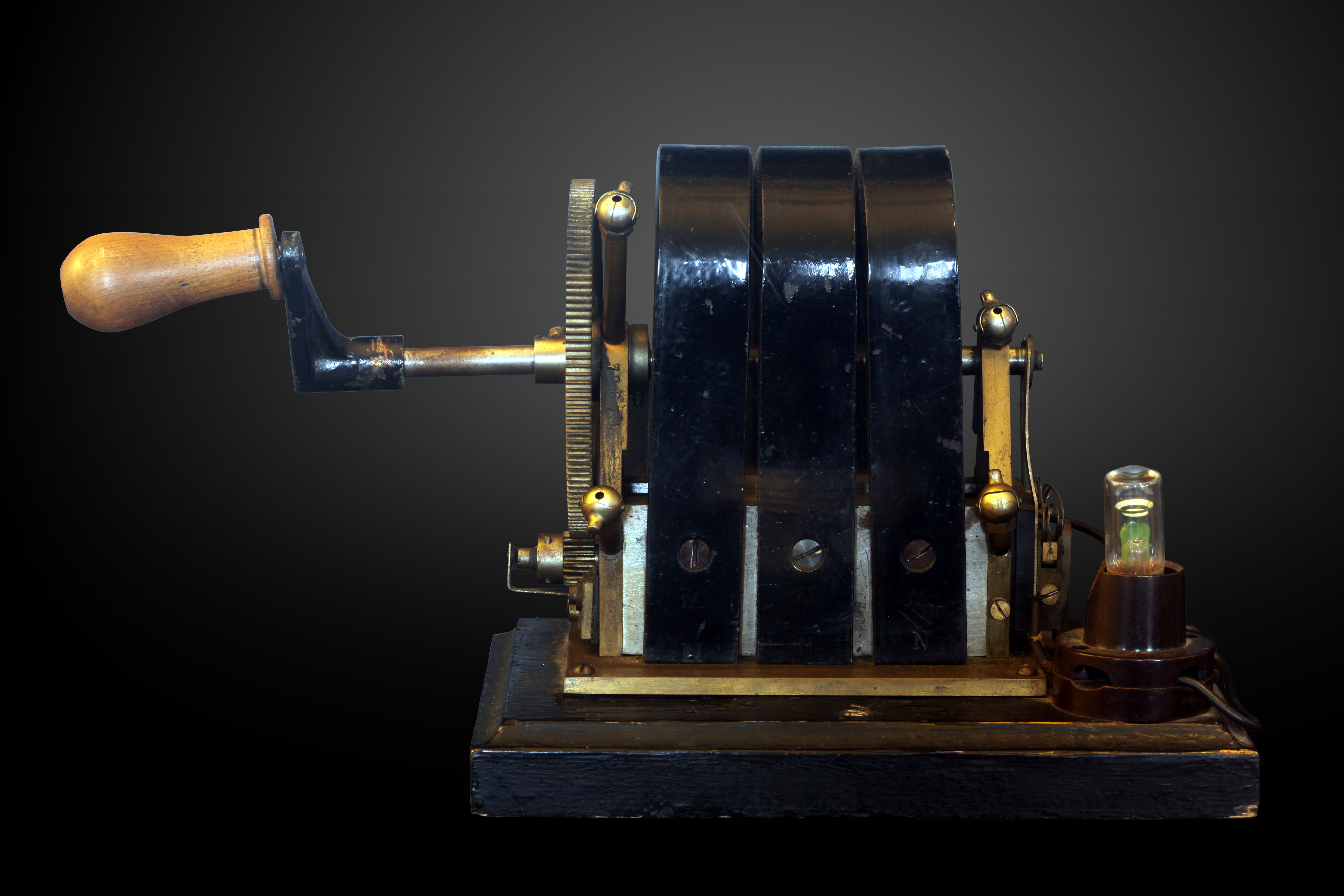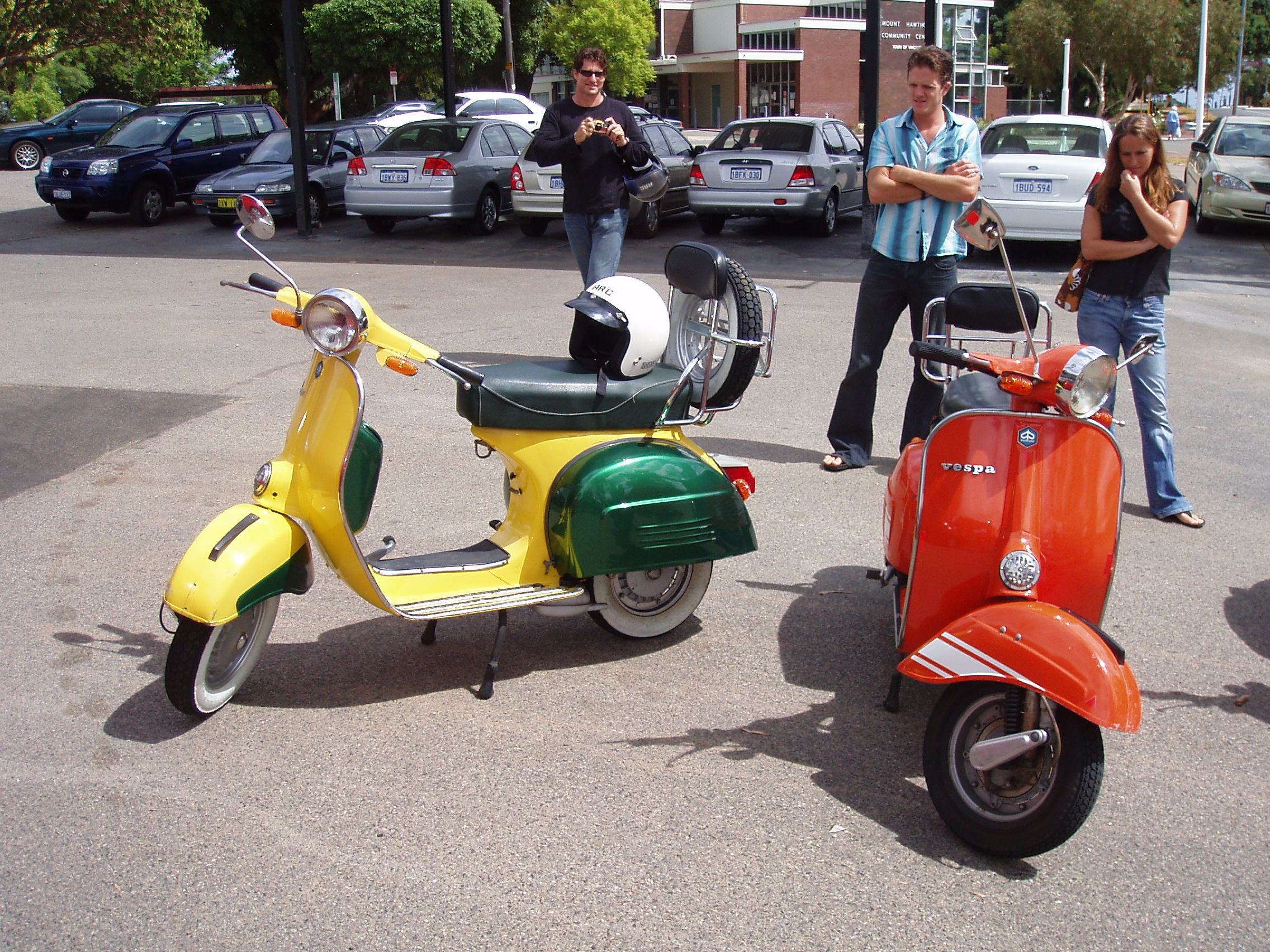|
Piaggio Ciao
The Piaggio Ciao (''ciao'' means "hi" or "bye" in Italian) is a family of moped produced by Piaggio from 1967 through 2006. Specification It has a rigid rear, and a leading-link front suspension. Some models include a sprung seat-post. The engine and drive-train are cleanly enclosed, similar to Piaggio's scooters. The Ciao uses a belt drive, unlike most other mopeds which are chain driven. Some models have an automatic continuously variable transmission. Braking is by front and rear drums. Power for the lamps, horn, and ignition is from a magneto A magneto is an electrical generator that uses permanent magnets to produce periodic pulses of alternating current. Unlike a dynamo, a magneto does not contain a commutator to produce direct current. It is categorized as a form of alternator, ...; there is no battery. However, models with turning signal lights were equipped with a 6-volt battery for the blinkers to function. On newer models, the plastic fuel cap also serves as ... [...More Info...] [...Related Items...] OR: [Wikipedia] [Google] [Baidu] |
Piaggio
Piaggio & C. SpA (Piaggio ) is an Italian motor vehicle manufacturer, which produces a range of two-wheeled motor vehicles and compact commercial vehicles under seven brands: Piaggio, Vespa, Gilera, Aprilia, Moto Guzzi, Derbi, and Scarabeo. Its corporate headquarters are located in Pontedera, Italy. The company was founded by Rinaldo Piaggio in 1884, initially producing locomotives and Railroad car, railway carriages. Piaggio's subsidiaries employ a total of 7,053 employees and produced a total of 519,700 vehicles in 2014. The manufacturer has six research-and-development centers and operates in over 50 countries. History In 1882, Enrico Piaggio purchased land in Sestri Ponente (Genoa) to set up a timber yard. Two years later, in 1884, his 20-year-old son, :it:Rinaldo Piaggio, Rinaldo Piaggio (1864–1938), founded Piaggio & C. The company initially built locomotives and railway carriages but in 1917, towards the end of World War I, Rinaldo Piaggio turned to the military sector ... [...More Info...] [...Related Items...] OR: [Wikipedia] [Google] [Baidu] |
Motorcycles Introduced In 1967
A motorcycle (motorbike, bike, or trike (if three-wheeled)) is a two or three-wheeled motor vehicle Steering, steered by a Motorcycle handlebar, handlebar. Motorcycle design varies greatly to suit a range of different purposes: Long-distance motorcycle riding, long-distance travel, Motorcycle commuting, commuting, cruising (driving), cruising, Motorcycle sport, sport (including Motorcycle racing, racing), and Off-roading, off-road riding. Motorcycling is riding a motorcycle and being involved in other related social activity such as joining a motorcycle club and attending motorcycle rally, motorcycle rallies. The 1885 Daimler Reitwagen made by Gottlieb Daimler and Wilhelm Maybach in Germany was the first internal combustion, petroleum-fueled motorcycle. In 1894, Hildebrand & Wolfmüller became the first series production motorcycle. Globally, motorcycles are comparably popular to cars as a method of transport. In 2021, approximately 58.6 million new motorcycles were sold ar ... [...More Info...] [...Related Items...] OR: [Wikipedia] [Google] [Baidu] |
Piaggio Ciao
The Piaggio Ciao (''ciao'' means "hi" or "bye" in Italian) is a family of moped produced by Piaggio from 1967 through 2006. Specification It has a rigid rear, and a leading-link front suspension. Some models include a sprung seat-post. The engine and drive-train are cleanly enclosed, similar to Piaggio's scooters. The Ciao uses a belt drive, unlike most other mopeds which are chain driven. Some models have an automatic continuously variable transmission. Braking is by front and rear drums. Power for the lamps, horn, and ignition is from a magneto A magneto is an electrical generator that uses permanent magnets to produce periodic pulses of alternating current. Unlike a dynamo, a magneto does not contain a commutator to produce direct current. It is categorized as a form of alternator, ...; there is no battery. However, models with turning signal lights were equipped with a 6-volt battery for the blinkers to function. On newer models, the plastic fuel cap also serves as ... [...More Info...] [...Related Items...] OR: [Wikipedia] [Google] [Baidu] |
Suspension (motorcycle)
A motorcycle's suspension serves a dual purpose: contributing to the vehicle's handling and braking, and providing safety and comfort by keeping the vehicle's passengers comfortably isolated from road noise, bumps and vibrations. The typical motorcycle has a pair of fork tubes for the front suspension, and a swingarm with one or two shock absorbers for the rear suspension. Front suspension The most common form of front suspension for a modern motorcycle is the telescopic fork. Other fork designs are girder forks, suspended on sprung parallel links (not common since the 1940s) and bottom leading link designs, not common since the 1960s. Some manufacturers (e.g. Greeves) used a version of the swinging arm for front suspension on their motocross designs. A single-sided version of the idea is also used in motor scooters such as the Vespa. The hub-center steering as developed by Ascanio Rodorigo, on a concept associated to Massimo Tamburini is a complex front swingarm alternat ... [...More Info...] [...Related Items...] OR: [Wikipedia] [Google] [Baidu] |
Magneto (electrical)
A magneto is an electrical generator that uses permanent magnets to produce periodic pulses of alternating current. Unlike a dynamo, a magneto does not contain a commutator to produce direct current. It is categorized as a form of alternator, although it is usually considered distinct from most other alternators, which use field coils rather than permanent magnets. Hand-cranked magneto generators were used to provide ringing current in telephone systems. Magnetos were also adapted to produce pulses of high voltage in the ignition systems of some gasoline-powered internal combustion engines to provide power to the spark plugs. Use of such ignition magnetos for ignition is now limited mainly to engines without a low-voltage electrical system, such as lawnmowers and chainsaws, and to aircraft engines, in which keeping the ignition independent of the rest of the electrical system ensures that the engine continues running in the event of alternator or battery failure. For redundancy ... [...More Info...] [...Related Items...] OR: [Wikipedia] [Google] [Baidu] |
Drum Brake
A drum brake is a brake that uses friction caused by a set of shoes or pads that press outward against a rotating cylinder-shaped part called a brake drum. The term ''drum brake'' usually means a brake in which shoes press on the inner surface of the drum. When shoes press on the outside of the drum, it is usually called a '' clasp brake''. Where the drum is pinched between two shoes, similar to a conventional disc brake, it is sometimes called a ''pinch drum brake'', though such brakes are relatively rare. A related type called a band brake uses a flexible belt or "band" wrapping around the outside of a drum. History The modern automobile drum brake was first used in a car made by Maybach in 1900, although the principle was only later patented in 1902 by Louis Renault. He used woven asbestos lining for the drum brake lining, as no alternative dissipated heat like the asbestos lining, though Maybach had used a less sophisticated drum brake. In the first drum brakes, levers a ... [...More Info...] [...Related Items...] OR: [Wikipedia] [Google] [Baidu] |
Continuously Variable Transmission
A continuously variable transmission (CVT) is an automatic transmission that can change seamlessly through a continuous range of gear ratios. This contrasts with other transmissions that provide a limited number of gear ratios in fixed steps. The flexibility of a CVT with suitable control may allow the engine to operate at a constant RPM while the vehicle moves at varying speeds. CVTs are used in cars, tractors, side-by-sides, motor scooters, snowmobiles, bicycles, and earthmoving equipment. The most common type of CVT uses two pulleys connected by a belt or chain; however, several other designs have also been used at times. Types Pulley-based The most common type of CVT uses a V-belt which runs between two variable-diameter pulleys. The pulleys consist of two cone-shaped halves that move together and apart. The V-belt runs between these two-halves, so the effective diameter of the pulley is dependent on the distance between the two-halves of the pulley. The V-shape ... [...More Info...] [...Related Items...] OR: [Wikipedia] [Google] [Baidu] |
Belt (mechanical)
A belt is a loop of flexible material used to link two or more rotating Drive shaft, shafts mechanically, most often parallel. Belts may be used as a source of motion, to Transmission (mechanics), transmit power efficiently or to track relative movement. Belts are looped over pulleys and may have a twist between the pulleys, and the shafts need not be parallel. In a two pulley system, the belt can either drive the pulleys normally in one direction (the same if on parallel shafts), or the belt may be crossed, so that the direction of the driven shaft is reversed (the opposite direction to the driver if on parallel shafts). The belt drive can also be used to change the speed of rotation, either up or down, by using different sized pulleys. As a source of motion, a conveyor belt is one application where the belt is adapted to carry a load continuously between two points. History The mechanical belt drive, using a pulley machine, was first mentioned in the text the ''Dictionary of ... [...More Info...] [...Related Items...] OR: [Wikipedia] [Google] [Baidu] |
Vespa
Vespa () is an Italian luxury brand of scooter (motorcycle), scooters and mopeds manufactured by Piaggio. The name means wasp in Italian. The Vespa has evolved from a single model motor scooter manufactured in 1946 by Piaggio & Co. S.p.A. of Pontedera, Italy to a full line of scooters and one of seven companies today owned by Piaggio. From their inception, Vespa scooters have been known for their painted, pressed steel unibody which combines, in a unified structural unit, a complete cowling for the engine (enclosing the engine mechanism and concealing dirt or grease), a flat floorboard (providing foot protection), and a prominent front fairing (providing wind protection). History After World War II, in light of its agreement to cease war activities with the Allies, Italy had its aircraft industry severely restricted in both capability and capacity. Piaggio emerged from the conflict with its Pontedera bomber plane plant demolished by bombing. Italy's crippled economy, and t ... [...More Info...] [...Related Items...] OR: [Wikipedia] [Google] [Baidu] |
Motorcycle Fork
A motorcycle fork connects a motorcycle's front wheel and axle to its frame, typically via a yoke, also known as a triple clamp, which consists of an upper yoke joined to a lower yoke via a steering stem, a shaft that runs through the steering head, creating the steering axis. Most forks incorporate the front suspension and front brake, and allow the front wheel to rotate about the steering axis so that the bike may be steered. Most handlebars attach to the top clamp in various ways, while clip-on handlebars clamp to the fork tubes, either just above or just below the upper triple clamp. The fork and its attachment points on the frame establish the critical geometric parameters of rake and trail, which play a major role in defining how a motorcycle handles and dives during braking. While the standard telescopic fork arrangement is found with few major differences among mainstream street motorcycles since the 1970s, historically there have been many variations, including trailin ... [...More Info...] [...Related Items...] OR: [Wikipedia] [Google] [Baidu] |
Moped
A moped ( ) is a type of small motorcycle, generally having a less stringent licensing requirement than full motorcycles or automobiles. The term used to mean a similar vehicle except with both bicycle pedals and a motorcycle engine. Mopeds typically travel only a bit faster than bicycles on public roads. Mopeds are distinguished from motor scooters in that the latter tend to be more powerful and subject to more regulation. Some mopeds have a step-through frame design, while others have motorcycle frame designs, including a backbone and a raised fuel tank, mounted directly between the saddle and the head tube. Some resemble motorized bicycles. Most are similar to a regular motorcycle but with pedals and a crankset that may be used with or instead of motor drive. Although mopeds usually have two wheels, some jurisdictions classify low-powered three- or four-wheeled vehicles (including ATVs and go-kart) as a moped. In some countries, a moped can be any motorcycle with an engine c ... [...More Info...] [...Related Items...] OR: [Wikipedia] [Google] [Baidu] |







